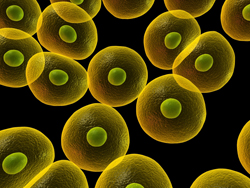Nanomembranes-mimicking nature’s cell membranes
Biological cells separate the intracellular from the extracellular environment, including the charged species (such as hydrogen ions or protons) present in each. They then use the electrochemical gradient to drive flows when selective channels are opened in the membrane. Such specific ion flows in cells are important in cell signalling. Separation processes are also critical to addressing numerous industrial and environmental challenges. Scientists initiated the EU-funded project 'Biomimetic ultrathin structures as a multipurpose platform for nanotechnology-based products' (MULTIPLAT) to exploit Nature's abilities in this respect. A key application is FCs. Proton exchange membrane fuel cells (PEMFCs) are also called polymer electrolyte membrane fuels cells. They produce electricity through the separation and flow of charged species (electrons and protons) typically from hydrogen fuel. Protons from hydrogen fuel pass from one electrode to the other through an electrolyte membrane while the electrons pass through an external circuit generating electricity. PEMFC efficiency has been limited by numerous factors including the lack of nano-scale membrane organisation that leads to lowered selectivity and increased resistance to flow. MULTIPLAT has developed nanomembrane platforms for novel artificially functionalised, ion-conductive biomimetic channels together with innovative manufacturing technology. Scientists have obtained a patent for the simple and efficient manufacturing technology. The organised nanochannels with the best performance were made of electrically isolated titanium dioxide (TiO2) nanotubes. This enabled the formation of highly organised structures in the nanomembranes with improved conductivity (reduced resistance) compared to the current state of the art. Several prototype devices were produced demonstrating superior parameters compared to conventional devices in the same classes. MULTIPLAT has created a multi-functional nanomembrane platform with artificially functionalised biomimetic ion channels of high conductivity and specificity. Such technology is relevant to FCs and a number of microfluidic digital devices such as those used in medical diagnostics and information processing. Commercialisation should thus have important impact on the competitiveness of the European economy.







